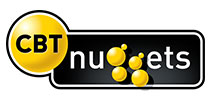جمع جزء: 189,000 تومان
- × 1 عدد: دوره یادگیری Azure Virtual Desktop Implement an AVD Infrastructure - 189,000 تومان
در این روش نیاز به افزودن محصول به سبد خرید و تکمیل اطلاعات نیست و شما پس از وارد کردن ایمیل خود و طی کردن مراحل پرداخت لینک های دریافت محصولات را در ایمیل خود دریافت خواهید کرد.


آموزش سیسکو H.323 و SIP

Cisco CCT Collaboration (100-890 CLTECH) Online Training

350-801 CLCOR Online Training

کورس پیکربندی Cisco Cube
-main-resized.jpg)
استقرار Cisco Unified Center Center Express (UCCX)

350-801 CLCOR Online Training

Fundamental Cisco Training for Collaboration Engineers

دوره یادگیری پیکربندی Cisco CME

اسکریپت نویسی برای UCCX

350-801 CLCOR Online Training
✨ تا ۷۰% تخفیف با شارژ کیف پول 🎁
مشاهده پلن ها